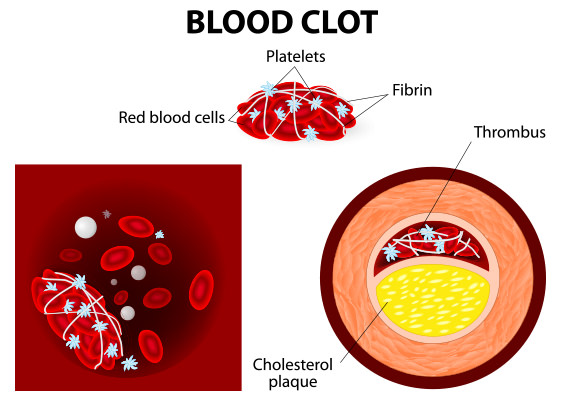Around 1.8 million people every year opt for hip or knee replacements. But I don’t recommend surgery, unless it’s absolutely necessary.
And new research reveals that in the month after they had surgery, these patients — many of whom are osteoarthritis sufferers — simply replaced their bad knees and hips with a heart attack.
Osteoarthritis is the most common chronic condition of the joints.

That’s why I recommend natural remedies that ease the pain of osteoarthritis in a much more effective and safer way — and in some cases they can even reverse this debilitating condition.
You see, getting a new hip or knee is major surgery — and it comes with a major risk you won’t hear about from mainstream medicine.
Yes, they’ll probably tell you recovery is tough. They might even tell you that the potential complications include kidney failure, septic shock, pneumonia and infections.
But there’s one complication that even your doctor maybe unaware of…
I’m talking about the shocking spike in heart attack rates for osteoarthritis patients who get new knees or hips.
Why are people with osteoarthritis at greater risk of suffering a heart attack?
It’s one of the reasons I rarely recommend surgery — and a new study backs up my concern.
Researchers at Boston University studied 6,063 osteoarthritis patients who underwent hip replacements. They compared them with 6,603 hip patients who didn’t get surgery.
In the month after surgery, heart attack rates for the group with new hips shot up 400% compared with patients who opted to skip the surgery.1
Knee surgery was even worse. The researchers looked at 13,849 patients with knee osteoarthritis who had knee replacements. And they compared them with knee patients who didn’t get surgery.
In the month after they got a new knee, heart attacks rates
skyrocketed 800%, compared
Now, if you survive that first month, your risk of heart attack gradually decreases. But you have to wait three years to see your risk return to normal.
And heart attacks aren’t the only risk to these surgeries. The same study found that deadly blood clots called venous thromboembolisms (VTEs) were more than 63 times higher in knee replacements in the first month. For hip surgery the risk was 78 times higher.

VTEs are blood clots that form in a deep vein usually in the lower leg, thigh or pelvis. They can break off and make their way to the lungs through the bloodstream. If that happens, death occurs in about one month in 12% of the cases.
And unlike the heart attack risk, rates of VTE don’t fall after surgery. In the Boston study, the odds of having a VTE were still higher in the group with new knees and hips five years later.
The typical orthopedic surgeon has no idea how to lower these deadly risks. And they don’t have a clue about natural ways to prevent and relieve osteoarthritis.
I help my patients ease their pain and keep their joints healthy before surgery becomes necessary.
Here are three things I recommend patients do at home to avoid joint surgery.
1. Follow a Primal Diet: One big reason we have such an epidemic of osteoarthritis is our modern diet. Our ancestors ate a primal diet rich in vitamin K2. This forgotten vitamin helps your bones absorb calcium to keep joints strong. A two-year Japanese study found that vitamin K2 reduced spinal fractures by 52% in patients with osteoporosis,
compared with patients who did not receive K2.2
You can get plenty of vitamin K2 by eating egg yolks and organ meats like liver. Other rich sources include meat and dairy like cottage cheese, butter and aged cheeses. But all of these foods MUST come from grass-fed animals. You see, animals fed on soy, corn or other grains don’t produce vitamin K2.

I also recommend supplements. Look for vitamin K2 in the form of menaquinone-7. It’s a more bioactive form. Take 45 to 90 mcg a day. And it’s fat-soluble, so take it with a meal to improve absorption.
2. Ease Pain With Arnica: Most doctors will tell you to take painkillers for osteoarthritis. But drugs like Motrin, Advil, Aleve, and other NSAIDs (nonsteroidal anti-inflammatory drugs) have dangerous side effects. They’re linked to kidney damage, anemia, heart palpitations and gastrointestinal bleeding.

When I have pain from old injuries, I apply a yellow herb known as arnica or Wolf’s Bane. Arnica is an anti-inflammatory that can relieve chronic joint pain. It contains a healing compound called thymol. This stimulates your white blood cells to disperse fluid trapped in your joints. That’s what causes swelling. After the swelling goes down, your body takes over and
can finish the healing process more efficiently.
One study looked at 204 people with osteoarthritis in their hands. It found that people who used arnica gel experienced just as much relief as the group that took ibuprofen — but without the side effects.3 In another study 79 people with arthritis in their knees used arnica gel. They felt less pain and stiffness and had a better range of motion.4
3. Eat more pineapple: Pineapple contains an enzyme called bromelain that stops aches and pains. In fact, studies show bromelain is as effective as some commonly used NSAID drugs for reducing osteoarthritis pain.5

To help lessen inflammation, you’ll need to eat about a cup of fresh pineapple every day. The highest bromelain levels are found in the pineapple core so don’t throw it away. Add some to your smoothie in the morning.
To get bromelain’s effects a little faster and more consistently, you can take a supplement. Look for a capsule that is at or near 2,400 GDU, the highest standardized potency you can get. I recommend you take 400-500 mg a day.
To Your Good Health,
![]()
Al Sears, MD, CNS
1. Lu, N., et al., “Total Joint Arthroplasty and the Risk of Myocardial Infarction – A General Population, Propensity Score-Matched Cohort Study.” Arthritis & Rheumatology Vol. 67, Issue 10, pages 2771–2779, October 2015.
2. Shiraki M, Shiraki Y, Aoki C, Miura M. “Vitamin K2 (menatetrenone) effectively prevents fractures and sustains lumbar bone mineral density in osteoporosis.” J Bone Miner Res. 2000;15(3):515-21.
3. Widrig R, Suter A, et al. “Choosing between NSAID and arnica for topical treatment of hand osteoarthritis in a randomised, double-blind study.” Rheumatol Int. 2007;27(6):585-9.
4. Knuesel O, Weber M, Suter A. “Arnica montana gel in osteoarthritis of the knee: an open, multicenter clinical trial.” Adv Ther. 2002;19(5):209-18.
5. Brien S, Lewith G, Walker A, Hicks SM, Middleton D. “Bromelain as a Treatment for Osteoarthritis: a Review of Clinical Studies.” Evidence-based Complementary and Alternative Medicine. 2004;1(3):251-257.

